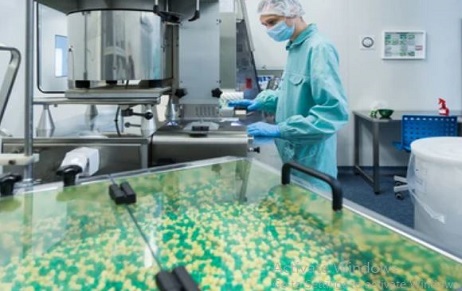Introduction What is Artificial Intelligence? Creating computer systems capable of carrying out activities that need…
An Essay on the Healthcare Industry and Patents: An Indian Approach
Introduction
The World Trade Organization (WTO), via the TRIPS agreement, has set out various governing provisions for pharmaceutical patents. Under these provisions, the authorities provide patent holders protection on their patents for at least two decades. Patents provide the patentee an exclusive license to create, utilize, or trade the patented innovation and forbid others from doing so without their consent. This is to ensure that the inventor of this new invention is allowed certain financial rewards for their product of innovation – as they so rightly deserve.
However, the ethical dilemma soon arises – if the “product of innovation” is a life-saving drug, should it be monopolized by the individual when it could save thousands of lives all over the globe – or even make their lives a bit easier than without the drug?
The TRIPS Agreement (Clause 8) recognises the need for promoting public health – but the current patenting system does almost nothing to address the current public health crisis. Not only are the financial incentives not enough to encourage the research and discovery of new pharmaceutical essentials but also the patenting and monopolizing of such life-improving discoveries is a barrier for access of such products for the general public.
Main Blog
In order to entice competent artisans from overseas, the idea of providing monopolistic power in return for innovative technology first emerged in England in the 14th century. Although the patent system in the pharma industry encourages innovation, research, and development, these businesses raise the price of pharmaceuticals and medicines relative to their production costs. Consequently, the general public does not receive the access to such pharmaceutical products – resulting in a steep increment in prices and a staggering effect on the GDP. While the TRIPS Agreement does, in fact, ensure the promotion of public health within its provisions – it is important to note that what’s written on paper is often not met in reality.
 Right to Health
Right to Health
Our health sector is highly altered by the Indian Constitution’s Articles 14 and 21, which encourage government officials to constantly enhance it. The Treaty’s duties are also detailed in Article 51 of India’s Constitution, and this commitment has a direct impact on the nation’s present health crisis. The National Rural Health Mission and the National Urban Health Project (NUM), which strive to enshrine births and guarantee that sufficient supplies are available to assist pregnancies and new births, are just two of the initiatives that the Indian government has debuted for the underprivileged in both urban and rural areas to accomplish these objectives.
Such has also been upheld by the judiciary via various cases – like the Bandhua Mukti Morcha case, wherein Even though the States are not required by the judicial framework to protect such personal liberties of human dignity through legislative statutes or executive orders, the Court ruled that they can do then when legislation is passed by the State securing these privileges for the workforce and enshrining their the right to live with basic human dignity.
Provisions Affecting Public Healthcare and Patents
Under S. 47 of the Patent Act of 1970, the provision enshrined highlights the fact that in the case of a new medicine or a drug, for the sole purpose of the government’s use, distribution to other pharmacies, hospitals, or medical facilities created by the Central Government, drugs or medication may be brought into the state for dispensing by or on the government’s behalf. Meanwhile, S. 66 provides the Central Government with the authority to withdraw any of the patents mentioned in this section if the public will be harmed by the invention or its procedures. It is possible to broaden the public interest while still protecting public health. Likewise, there exist various other provisions under the realm of this act, enshrined for the purpose of Public Health Care. Some of them include –
- Application for a mandatory license pursuant to S. 84 must be submitted to the Controller three years after the patent’s been awarded, for any of the following reasons –
- The patent falls short of the public’s realistic standards.
- that the patent is not reasonably accessible to the general population or that it is not reasonably priced for the community to get.
- The patent is not utilized inside of Indian territory.
- According to S. 92, if the Central Government decides that it is appropriate for compulsory licenses to be authorized at any time after safeguarding the prototype to function properly in reverence of any patent in force, either in situations of extreme immediacy or in instances of public, not commercial use, then it may issue a statement in this regard through a declaration in the official gazette.
And many more, including S. 107, which provides for the importing of patented products by any individual duly legally authorized to produce, sell, or market the product, which should not be viewed as a violation of the patent. If needed, this section may assist in importing patented medications at reasonable costs to safeguard the health of the public.
Novartis vs. Union of India
This decision does have a significant impact on India’s public health safety because most Indians are impoverished and struggle to afford accessibility to life-saving medications. The Patent Act’s Section 3(d) denies Novartis a patent for a novel form of “beta crystalline” for a particular medication due to the fact that Novartis has not proven the new or improved therapeutic effectiveness of the medicine.
The court claimed that in order for a novel type of drug to be granted a patent, it must demonstrate an improvement over the previous type in terms of therapeutic impact or curative capabilities. The features Novartis supplied may be helpful from a storage perspective, but it would not be sufficient to demonstrate “enhanced therapeutic efficacy,” according to the court, which rejected Novartis’s claim.
But in this instance, the court never asserted that a novel kind of acknowledged compound would never be subject to a patent. Only the fact that a novel sort of well-known substance would never be copyrighted has been established. Therefore, from this perspective, the ruling does not look down on intellectual property nor does it try to hinder the development of science and technology, and it might serve as a global example for industrialized nations to protect public health.
Conclusion
Especially in a post-covid world, the right to health stands out to be a crucial right – and access to medication for any diseases is included in it.
Patents are meant to promote invention while also ensuring that the general public can purchase the advancements. Finding a balance between the requirements of the general public and the interests of patent holders can be difficult when it comes to public health. The process of developing new medicines involves extensive research, major financial investment, regulatory approval procedures, and costly clinical trials. Patents provide incentives for people who develop new treatments, increasing their desire to spend money on essential research. If problems like ownership of discoveries resulting from public research and licensing laws are handled, public R&D programmes and expenditures can be used more effectively.
India’s availability of affordable, life-saving pharmaceuticals remains to be continuously threatened by the financial interests of significant pharmaceutical industry stakeholders. Both innovation and patenting are equally important. Patents should not simply be obtained for financial gain; innovations should be made for the benefit of humanity, particularly in the realm of medicine.
Author : Areena Kausar, in case of any queries please contact/write back to us via email to chhavi@khuranaandkhurana.com or at IIPRD.
REFERENCES
- Revesz J, “Trade-Related Aspects of Intellectual Property Rights” (1999) 24 Productivity Commission Staff Research Paper, page 83.
- Elizabeth Siew-Kuan NG, Chapter on “Global health and development: patents and public interest’ in Thomas Pogge, Matthew Rimmer and Kim Rubenstein, Incentives for Global Public Health: Patent Law and Access to Essential Medicines” (Cambridge University Press 2010), page 113.
- Public Health and Patents, wipo.int, https://www.wipo.int/patent-law/en/developments/publichealth.html
- Roger Brownsword, “An Introduction to Legal Research”, Documentbest.com, page 3 http://documentbest.com/q9/3wgny7m4q9 .
- World Health Organization, “Intellectual Property and Access to Medicines” (WHO, 2012), page 3.2, http://apps.who.int/medicinedocs/documents/s19580en/s19580en.pdf (last accessed 26th November 2022).
- Jaya Vats, “Patents and the Right to Healthcare in India”, blog.ipleaders, January 31st 2021, https://blog.ipleaders.in/patent-right-healthcare-india/
- Bandhua Mukti Morcha vs Union Of India & Ors. 1984 AIR 802.
- Patent Act, No. 39 of 1970, § 47.
- Novartis vs. Union of India Civil Appeal No. 2706-2716 of 2013.

 Right to Health
Right to Health

